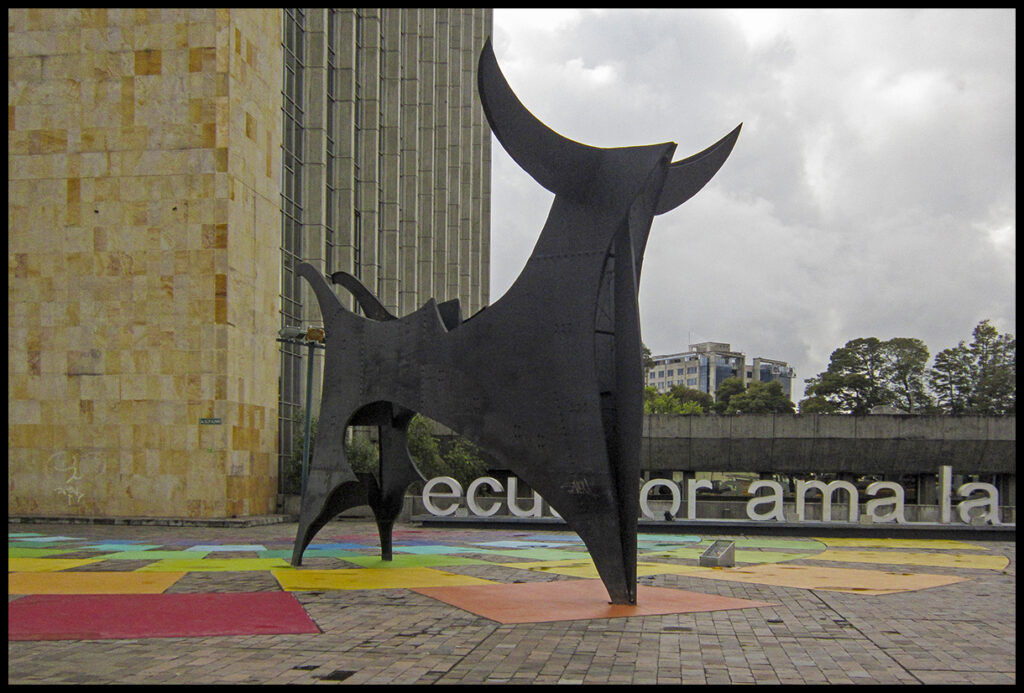
Plaza art in central Quito
Ecuador is a great place to get away from winter’s weather with one small caveat. This South American country straddles the equator and our winter is Ecuador’s rainy season. We initially solved this dilemma by making travel plans guided by weather predictions. However, we soon realized the futility of this plan. Fortunately, the weather inevitably turned out better than predicted.
Arriving in Quito, we (we being Craig and I and our friend Carol) stayed a few days to give our bodies a chance to acclimate to the 9350’ altitude in Ecuador’s capital city. Three days later, we rented an all-wheel drive car, packed our considerable luggage, and crossed the Andes to Baeza, a small city in the eastern foothills.
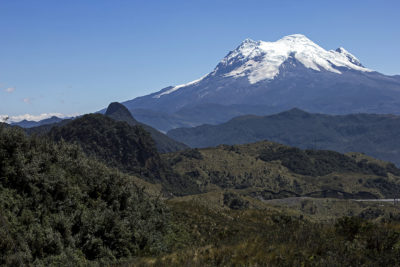
Antisana Volcano (18,740′) was missing in the fog on the first trip over the pass. Imagine our surprise to see it on the way back. Snow on the equator!
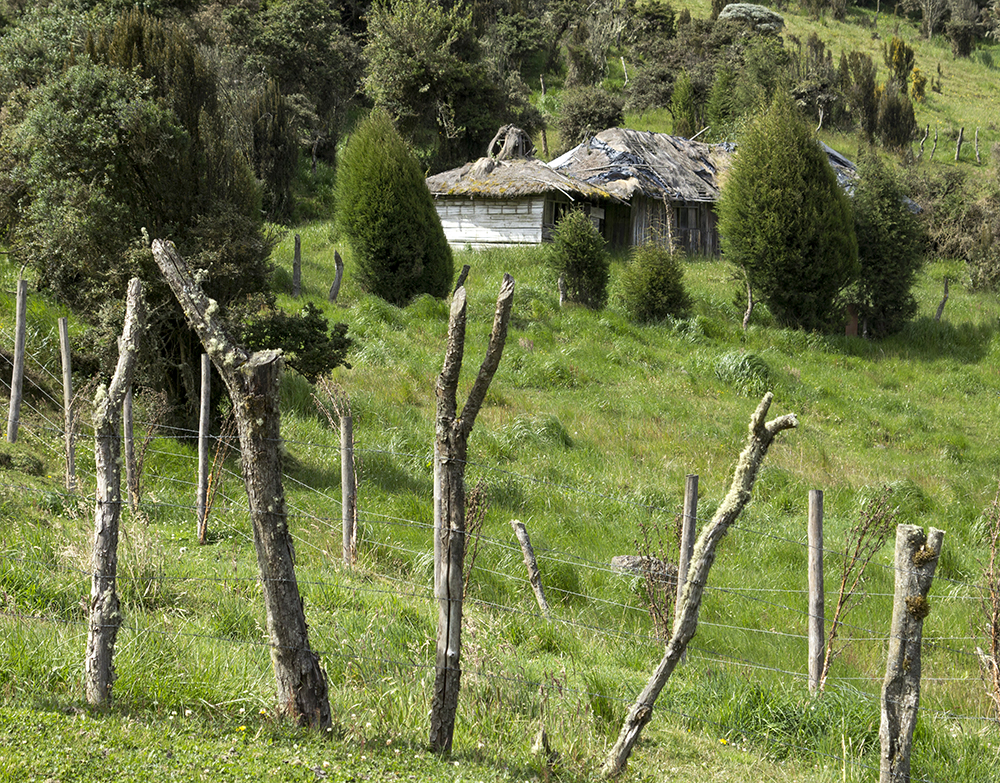
Mountain home surrounded by a living fence
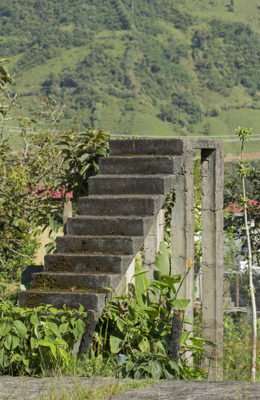
Stairs to nowhere in Baeza
In 1987 an earthquake wiped out Baeza. They moved the town proper to higher ground and rebuilt. On the old site they also rebuilt, but with an eye to tourist accommodation. It is now a quiet option. Down a steep and slippery trail, one finds waterfalls and some spectacular birds. When the Cock of the Rocks are on their lek (display area), apparently one can see many at a time. However, breeding was over so only saw the female building a nest. The males are large, bright orange and black birds (my picture from an aviary here).
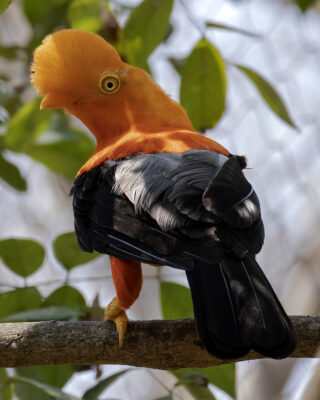
Cock of the Rock
Other Baeza sights…
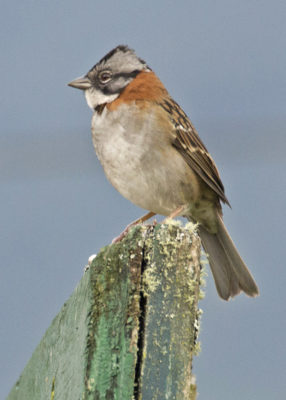
Rufous-collared sparrow
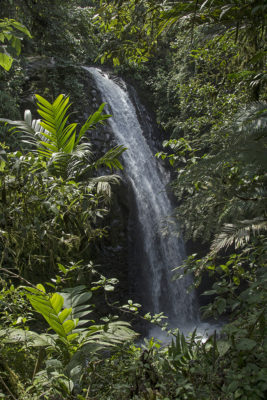
Falls in Baeza

Blue-crowned Mot Mot
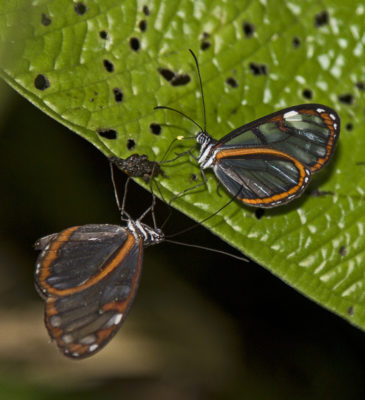
Clear winged butterflies
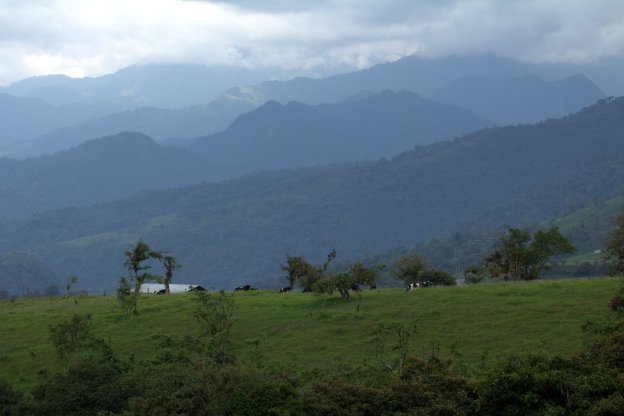
One of many views near Baeza
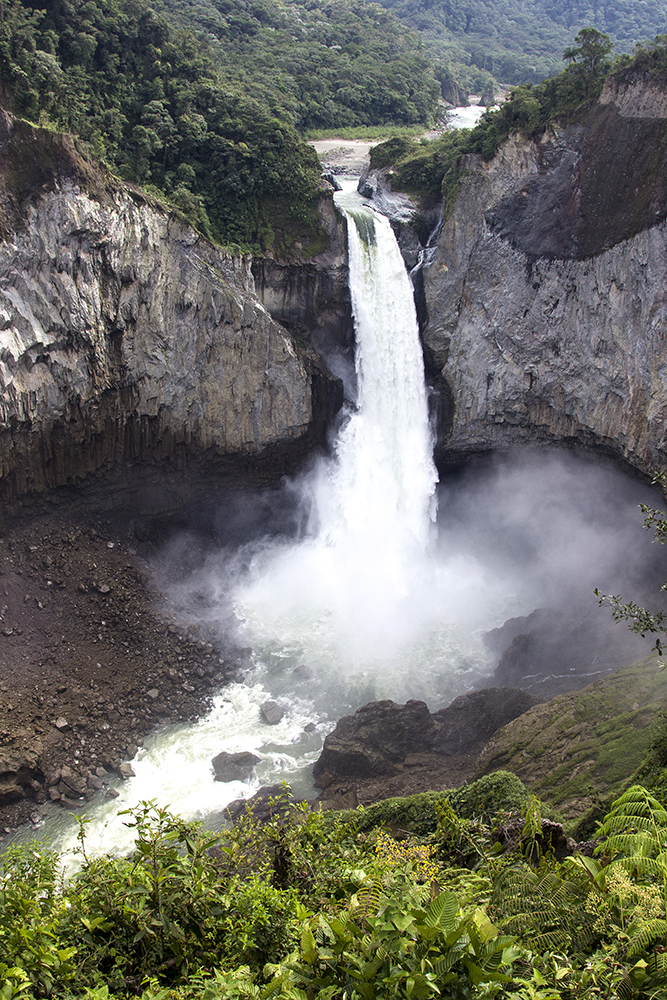
San Raphel falls, the highest falls in Ecuador.
On a side trip to San Raphel falls, a trail to the falls that was supposed to take 20 minutes, took us 2 hours because we saw so much to entertain us….
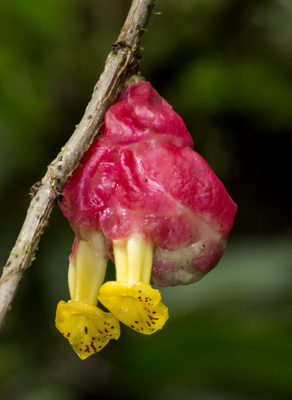
Goofiest flower ever. Pink blob with duck feet.
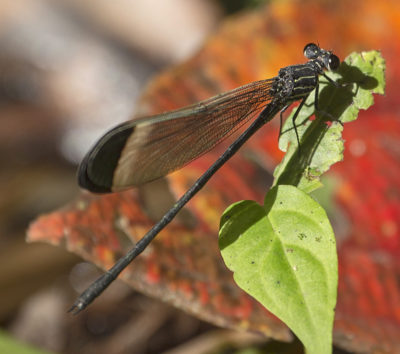
Large damselfly
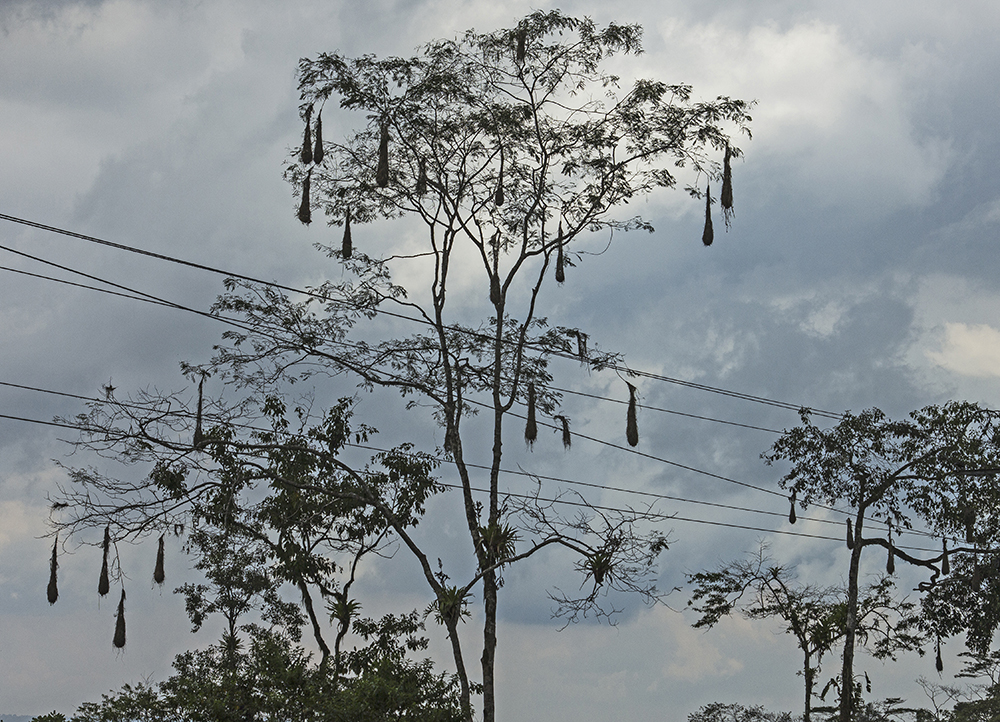
Oropendula nests near highway. These are large birds, bigger than crows, and related to orioles. They build huge pendulous nests and make gurgling display calls to each other.
Next we drop precipitously out of the mountain cool onto the lower foothills of the Eastern Andes to the town of Tena. It’s a busy, moderate sized city, squatting along the Rio Napo, a large tributary of the Amazon.
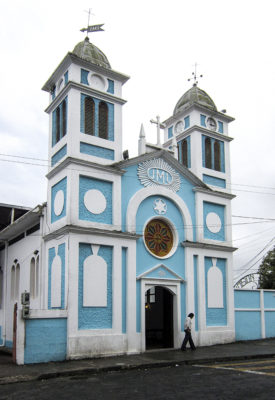
Church in Tena
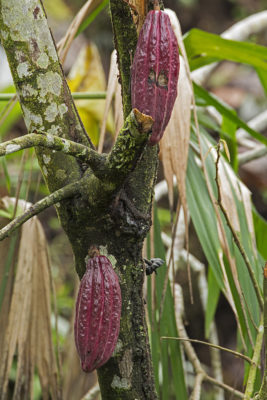
Tena cocoa pods
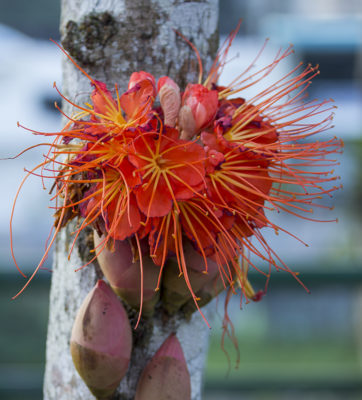
Red flower growing out of tree trunk.
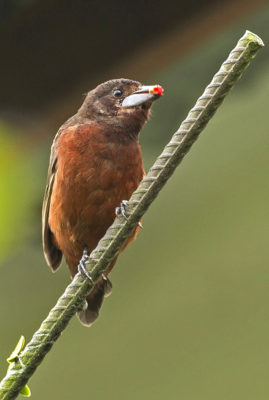
Silver-beaked tanager
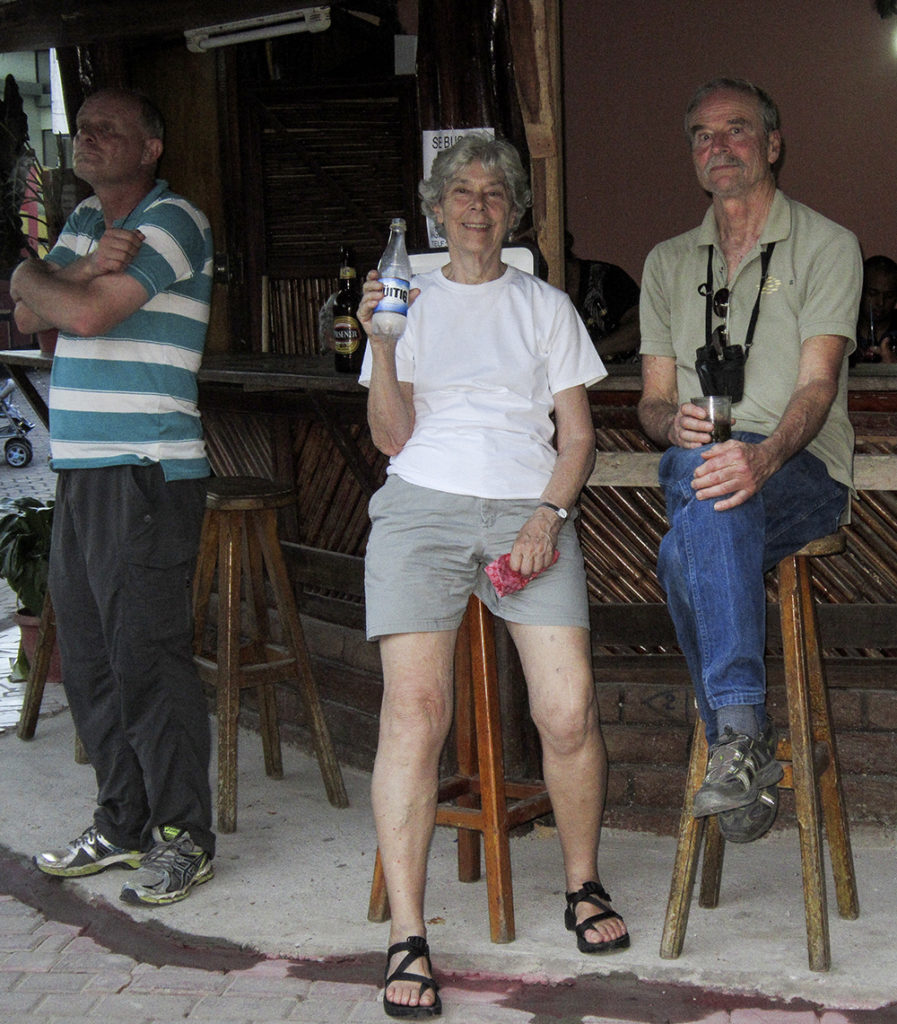
Carol and Craig fortify themselves before leaving for the Amazon area.
Stayed a few days to catch up on housekeeping duties before leaving for a biological research station deep in the jungle, where many volunteer groups pay for the privilege of working there. This visit bought us as close as we would get to the true hot and steamy Amazonian experience. Our cabin was basic, with tarantulas in the bathroom, bats in the hallway, and mosquito nets over the beds.
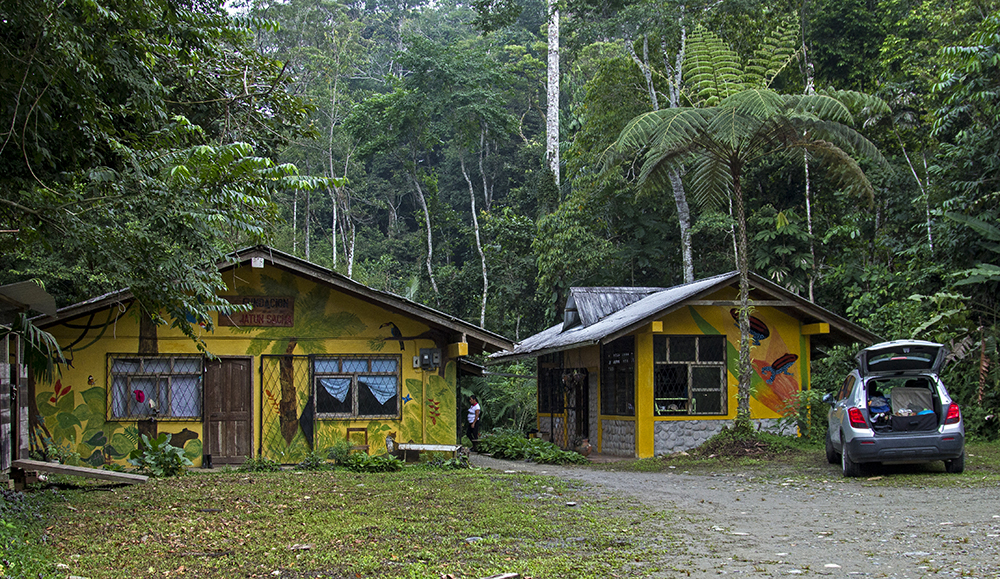
Jatun Sacha station.
Diego, our one day free guide, trekked us through the jungle to a tower site. He and Craig climbed this very high tower to a minuscule platform with a view into the low clouds. Not sorry I didn’t climb. On the ground Morpho Butterflies wafted about.
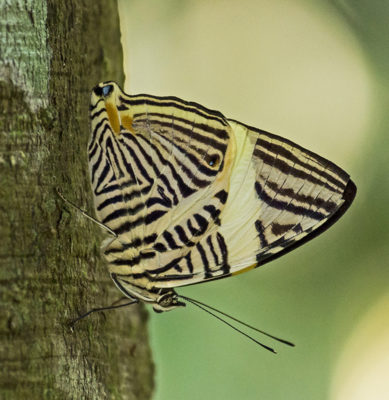
Upside down butterfly
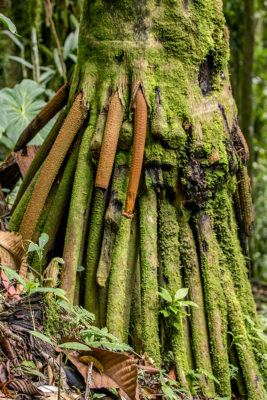
Diego, with a sly smile, called this palm, the devil’s penis.
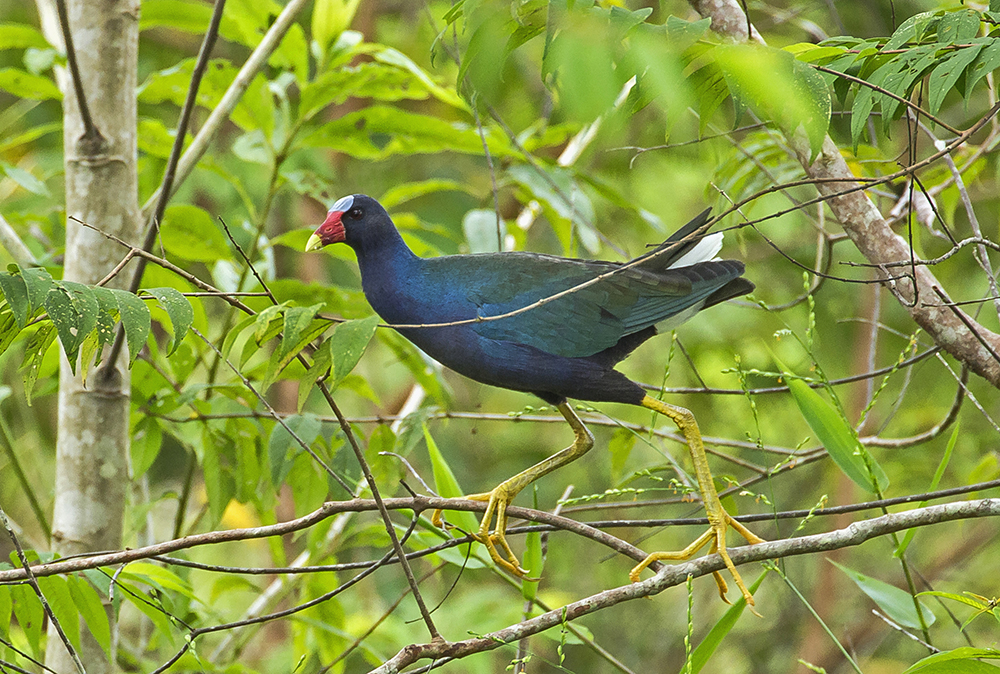
Purple Gallinule: one bird I actually recognized.
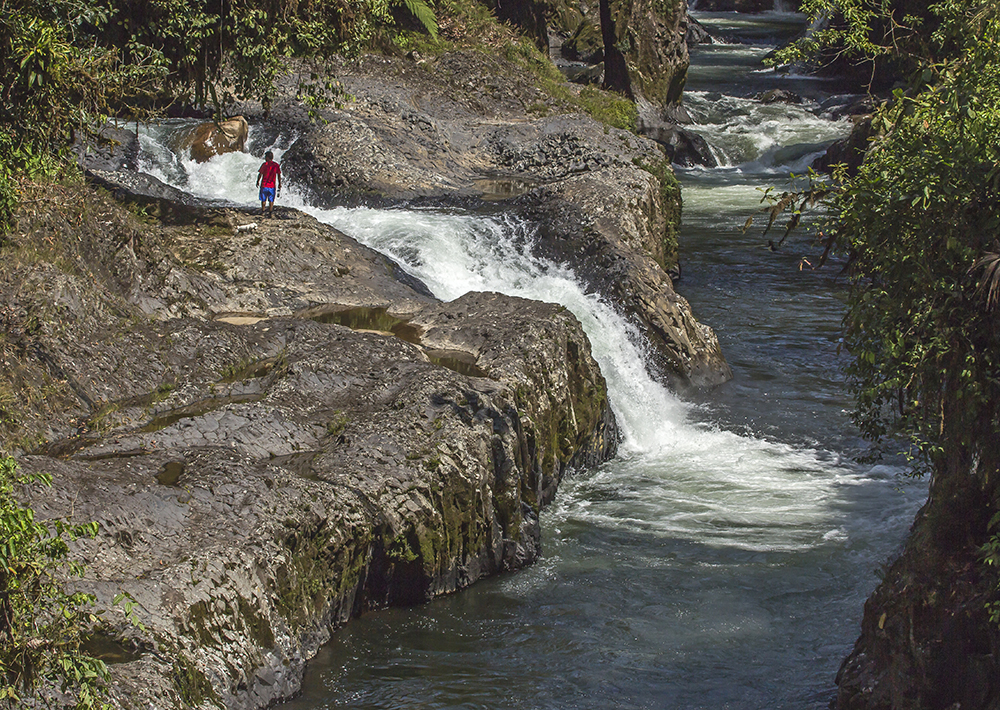
Rio Hollin splashes through a magnificent canyon on the way to our next jungle hideaway.
Fortunately for us, the WildSumaco Lodge was full, so the Swedish proprietor, offered us beds in his research facility with full board at the posh lodge. Still above our normal thrifty budget, but well worth it. Hummingbird feeders off the deck and bananas tied to trees to lure in local wildlife…what’s not to love.
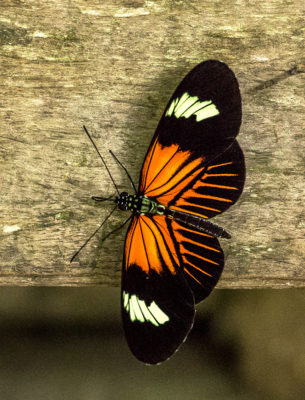
Stunning butterflies flitted under the canopy.
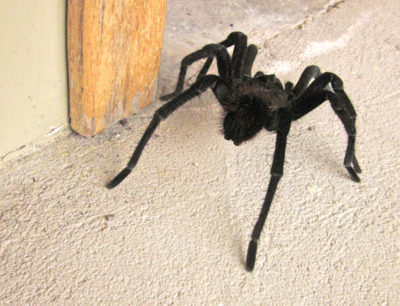
Tarantula at the cabin door.
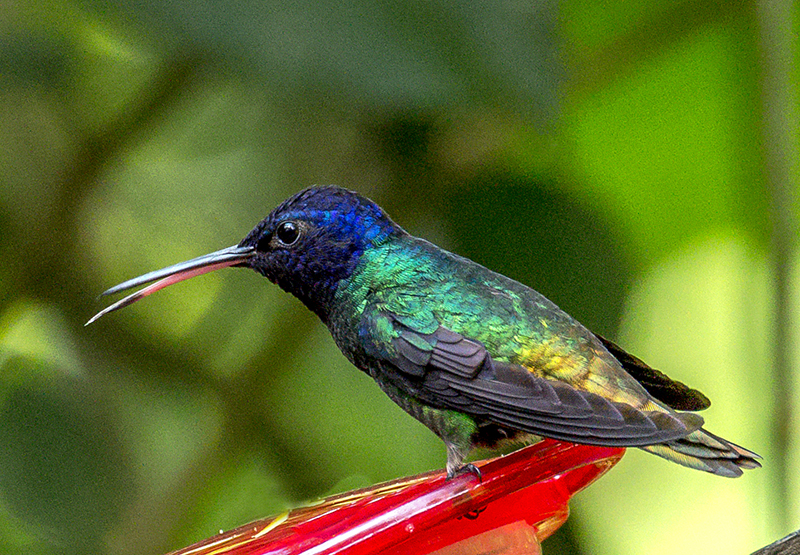
Feeders were busy dawn to dusk.
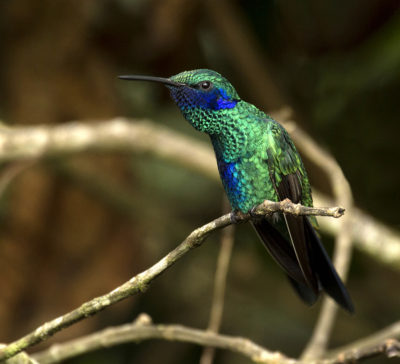
Sparkling Violet-ear: bully boy of the feeders.
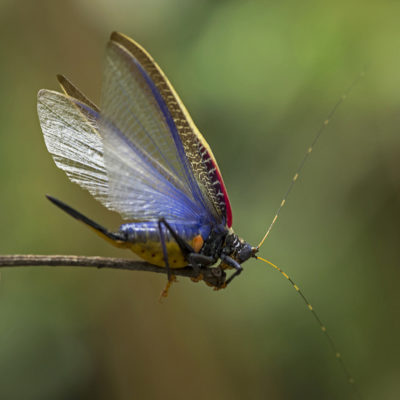
Flashy grasshopper.

The most spectacular of the morning moth collection…an Atlas moth, about 5 inches across with see through wing windows.
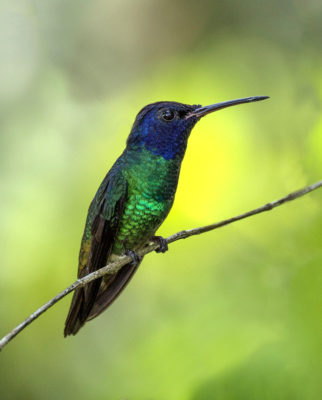
Golden-tailed sapphire
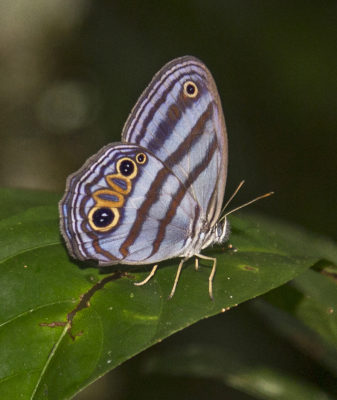
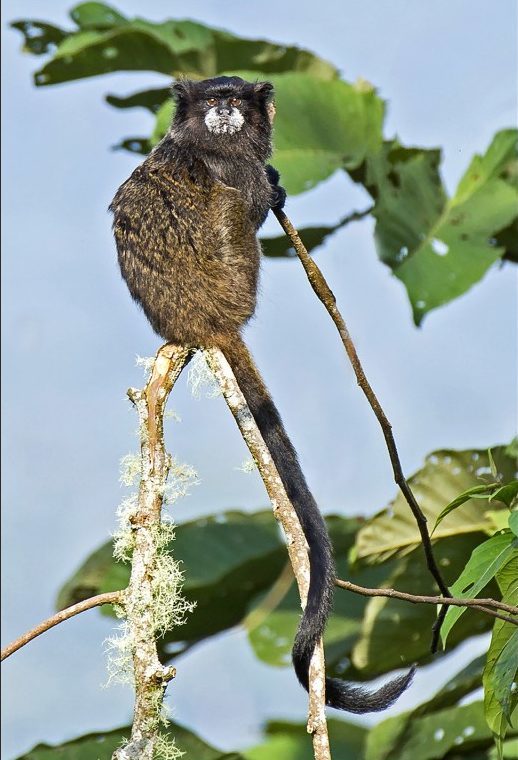
Napo Tamarind
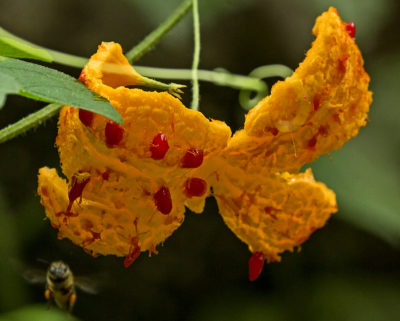
Orange flower open
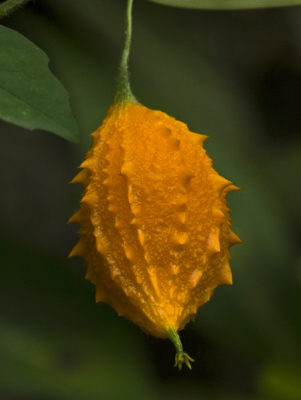
Orange flower closed
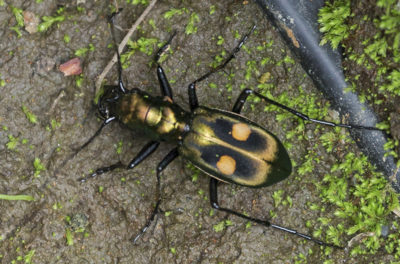
Coppery beetle
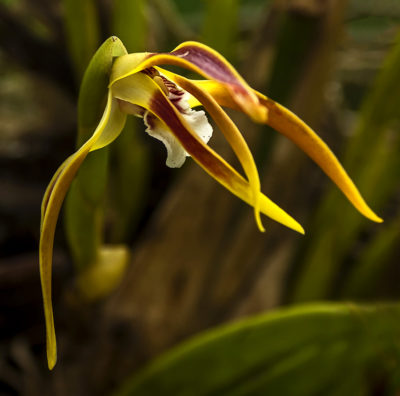
Orchids, wild and not, bloom everywhere.
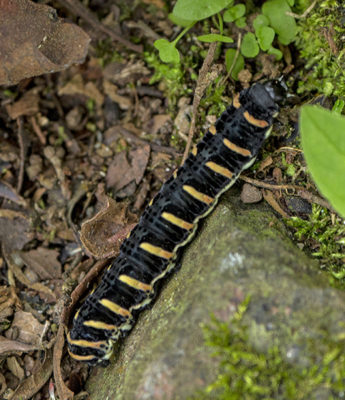
Caterpillar of some sort.
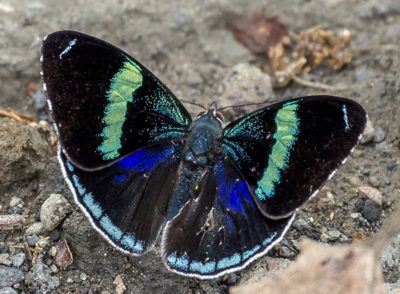
Another gorgeous butterfly
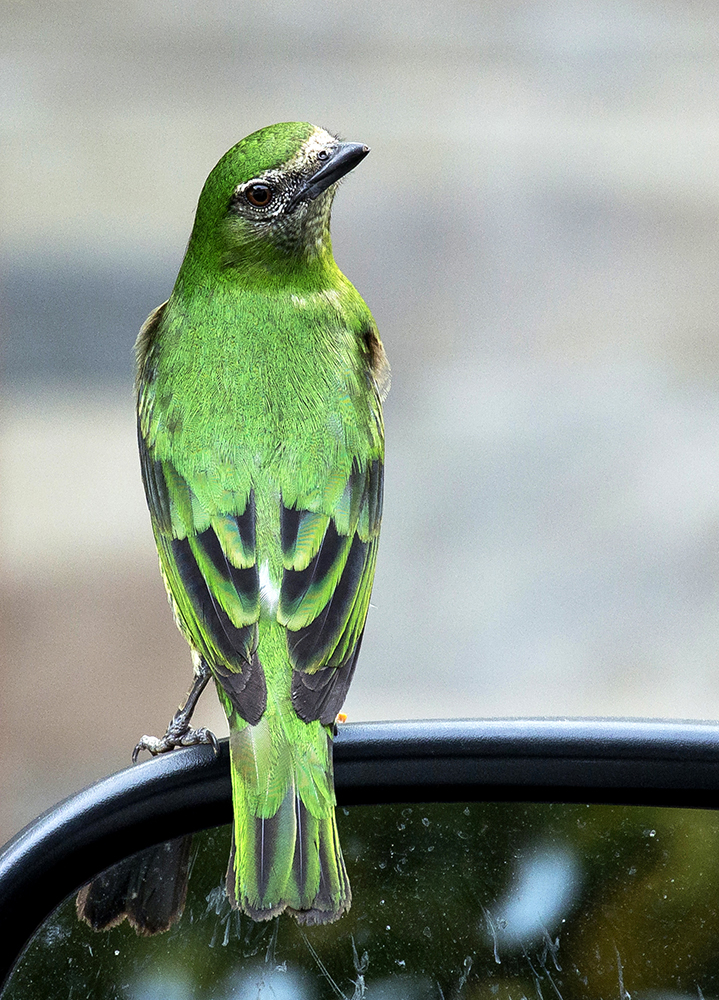
Sultry Mrs. Swallow Tanager of Tena
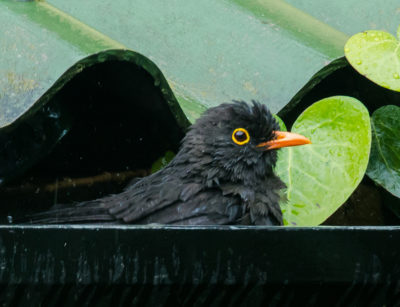
Glossy-Black Thrush bathing in rain gutter.
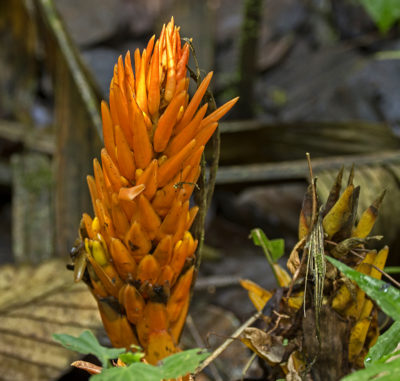
Wild ginger plant. Many domestic gingers grow in people’s yards.

Young boy of Tena. Unobtrusive portraits prove difficult. More to follow.
